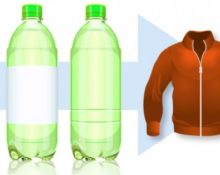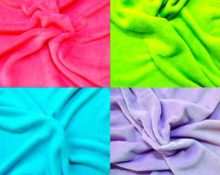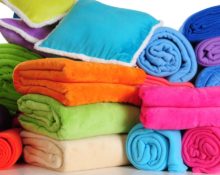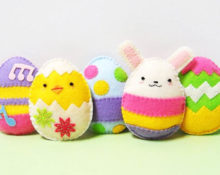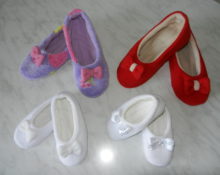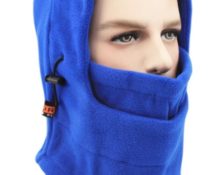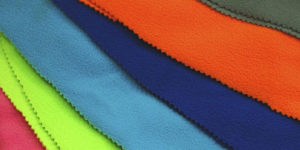 Fleece is a recent invention of American scientists. They even received a Nobel Prize for developing this fabric. It was originally conceived as a wool substitute. Its main feature is the ability to “breathe”. Quite soon the material began to be used in everyday life.
Fleece is a recent invention of American scientists. They even received a Nobel Prize for developing this fabric. It was originally conceived as a wool substitute. Its main feature is the ability to “breathe”. Quite soon the material began to be used in everyday life.
Compound
The composition includes several components that are responsible for its properties. The material is based on Bipolar fleece. The top layer is water-repellent, and the bottom layer is warming.
Between these two layers is Windblock, which provides protection from the wind. Lycra (wear resistance) and spandex (elasticity) are usually added to fleece. Depending on the type, the components may differ slightly, but these are the main components that determine its basic properties.
Advantages and disadvantages
pros
The main advantages of fleece:
- weight,
- elasticity,
- practicality,
- comfort.
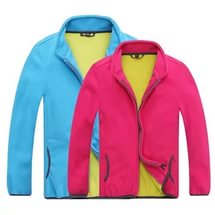 Thanks to the characteristics of the fabric, it is difficult to sweat in it. The material is not subject to biological destruction and therefore will last a long time.Fleece is very convenient to transport due to its relatively low weight compared to other things. Because of these qualities, it is often used in the production of sports and travel clothing.
Thanks to the characteristics of the fabric, it is difficult to sweat in it. The material is not subject to biological destruction and therefore will last a long time.Fleece is very convenient to transport due to its relatively low weight compared to other things. Because of these qualities, it is often used in the production of sports and travel clothing.
Minuses
There aren't many downsides, but they do exist. Some of them are easy flammability and frequent electrification. It is very easy to combat these problems using special means. Contact of the product with a naked body is not recommended, especially if it is of poor quality.
Important! When purchasing a product, check with the seller about its quality and manufacturer. Low-quality products tend to quickly discolor, losing their shape.
Kinds
There are many different types. The difference may lie not only in appearance, but also in the density of the fabric. Usually it is no more than 600 grams per square meter.
- Polarfleece - the thinnest type of material. It is usually used for sewing thermal underwear and light sweatshirts.
- Medium weight fleece– used for the production of clothing and some winter accessories.
- Dense – Blankets, blankets, winter clothes.
- Super dense – Used in the production of clothing and accessories for tourists.
Fleece care
 The material does not require careful care, unlike most fabrics, which is undoubtedly almost the main advantage. But of course some rules should be followed.
The material does not require careful care, unlike most fabrics, which is undoubtedly almost the main advantage. But of course some rules should be followed.
Fleece is a synthetic fabric - it is completely prohibited from washing with high temperature water (Above 30 degrees). The recommended washing mode is delicate. There is no point in squeezing the material at high speeds since the structure of the fibers allows it to dry quickly. Fleece does not wrinkle, which means it does not require ironing.Exposure to high temperatures can lead to the loss of its properties in the best case, and to the complete loss of the shape of the thing in the worst case.
Attention! It is strictly forbidden to use bleaching liquids and some powders when washing. It is best to use mild detergents or liquid powders when cleaning.
Fabric making
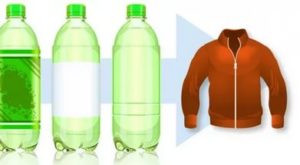 Fleece is pure synthetic. The fibers are used to create a strip of fabric which is subsequently processed at high temperatures. Then the production of the fabric itself begins, which will be the main basis of the fleece. It acquires many of its properties at this stage.
Fleece is pure synthetic. The fibers are used to create a strip of fabric which is subsequently processed at high temperatures. Then the production of the fabric itself begins, which will be the main basis of the fleece. It acquires many of its properties at this stage.
First, a machine with special hooks lifts small loops of fiber, which is why there is a fluffy pile on the fabric, in which breathing pores are located.
Then, various substances and additives reduce the flammability of the material, increasing the “life” of the fabric.
Areas of use
At the moment, fleece is used to create clothing, accessories (a protective layer for jackets and overalls), and interior items.
The material is most actively used for making winter clothing: scarves, hats, sweaters, overalls. Models with fleece on one side are used to make thermal underwear or outerwear.
Due to a number of useful properties, fleece is used to produce some types of workwear. For example, the use of material for camouflage uniforms.
Prices
Most fleece is imported from abroad. Therefore, various taxes and delivery fees are added to the manufacturer's price. The cheapest option is to buy fabric in China. Average prices for such material vary from 100 to 300 rubles per square meter. (Price as of June 2017).
So, this relatively new material, which has a huge number of applications, immediately took a leading position among materials for the production of clothing for people of all ages.
You will also find this video about fleece useful:


 0
0